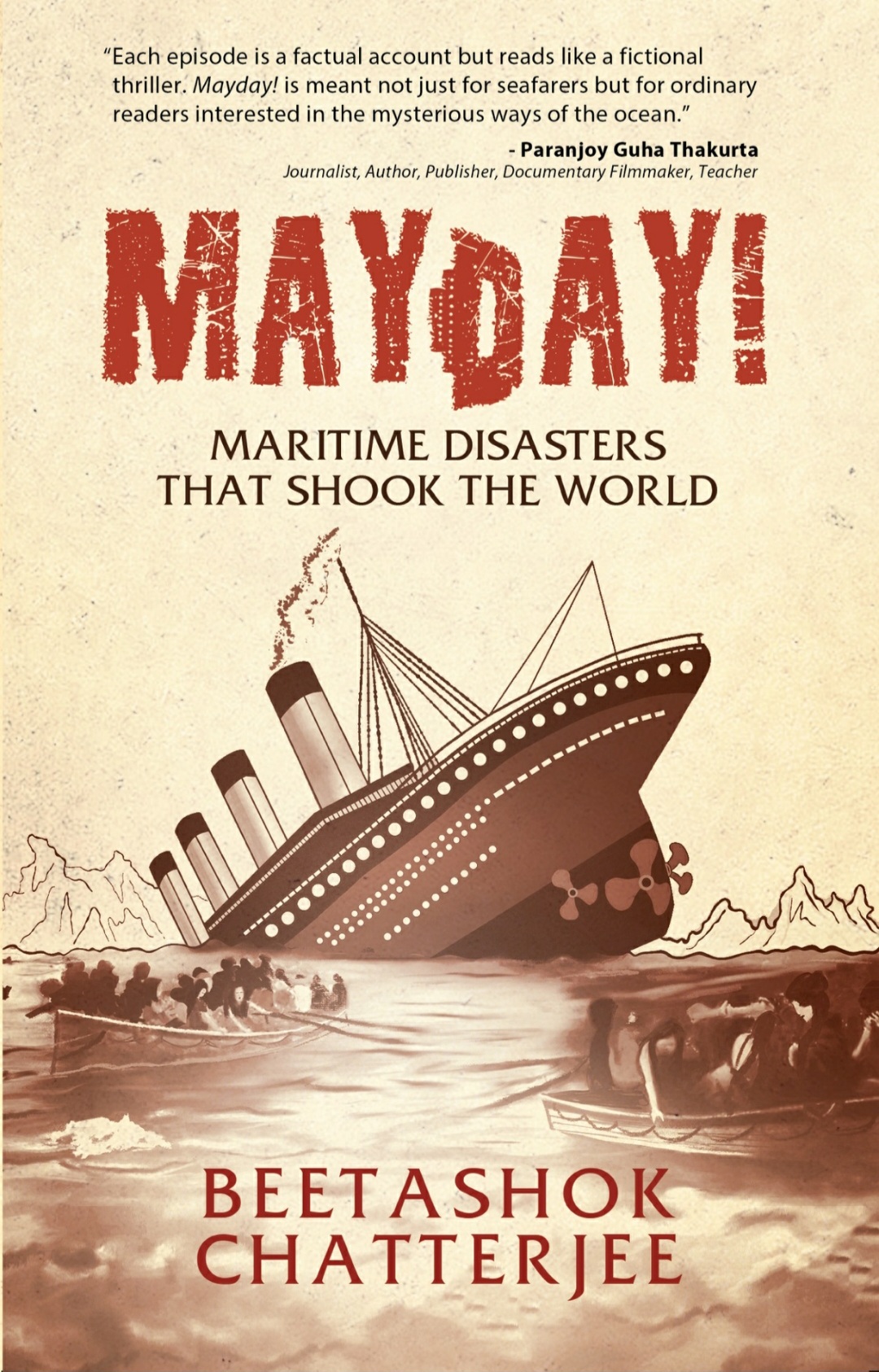Name – Mayday!
Author – Beetashok Chatterjee
Pages – 225
Mayday! is a collection of thirteen civilian maritime disasters spanning almost three centuries. The chapters have been arranged chronologically, starting from 1872. The list is not exhaustive, but the details will send a chill down one’s spine.
Review:
The boundless ocean with her abyssal depths has always fascinated humankind. Housing a plethora of organisms, the vast expanse of cerulean wonder has also inspired poets to pen paeans for her. However, the ocean holds many secrets and has an ominous relationship with men navigating her choppy waters. The recurrent motif of suffering and curses appears throughout literature, be it in The Odyssey or The Rime of the Ancient Mariner.
Every chapter on Mayday! deals with tragedies and mysteries that never saw the light of day. What transpired that day? Only the ocean knows!
Every marine expedition begins with a story as to what could have been on the minds of the crew before calamity struck. The author then proceeds to describe the accident and its aftermath. Thanks to Wikipedia and Google, even a layman can look up the events. But it takes an experienced seaman to explain and corroborate/deny the conspiracy theories/judgments. As mentioned earlier, the mysteries of the ocean run deep, but there’s no denying the human follies and the incorrigible need for profits.
Titanic has been immortalised on the big screen by Hollywood stalwarts, but the author manages to keep the readers hooked. Some ships like Mary Celeste remain abandoned in oblivion. Life goes on. Men are indeed a speck in the ocean-verse.
The ecological disaster owing to a shipwreck is immense. Seepage of oil leads to massive destruction and loss of marine animals. However, what made my blood boil was human greed. In an attempt to shirk responsibility, many stakeholders didn’t pay the penalty for their vices. Many accidents could have been avoided if the admission of extra passengers above the ship’s capacity had been prevented.
Thanks to this book, I learnt about maritime laws like the law of salvage and a horde of IMO conventions like SOLAS. The technicalities helped me understand the complex technology besides piloting and steering a ship. It’s easier to point fingers at the crew, but only those with a deep understanding can talk clearly about the what-ifs. However, I wish the technical jargon were minimal. After a while, it was difficult to rush to the glossary to understand terms like stern, hull, and keel.
It is weird to pick favourites in a book dealing with calamities, but a few touched my heart. The story of MV Sewol in South Korea was poignant, as innocent children, obeying the captain’s instructions, waited for the rescue teams in vain. The passengers aboard MV Doña Paz never saw Christmas again. It’s no surprise that Le Joola from Senegal got little or no coverage, considering the media’s fixation with the White West.
I credit the author for not imposing his theory onto the readers. On the contrary, he listed the possibilities, and based on his experience, he explained why this could have / could not have happened. Man, as always, succumbs to the might of the ocean. Technology hasn’t been able to prevent mishaps, as is evident from the recent collapse of the Baltimore Bridge.
Mayday! is informative and insightful. The interest never lags, save for the overdose of jargon. It is a testament to the valour of seamen, for whom being on board is akin to being on a battlefield, negotiating nature in her most powerful and enigmatic avatar.
Rating –
4.5 / 5




